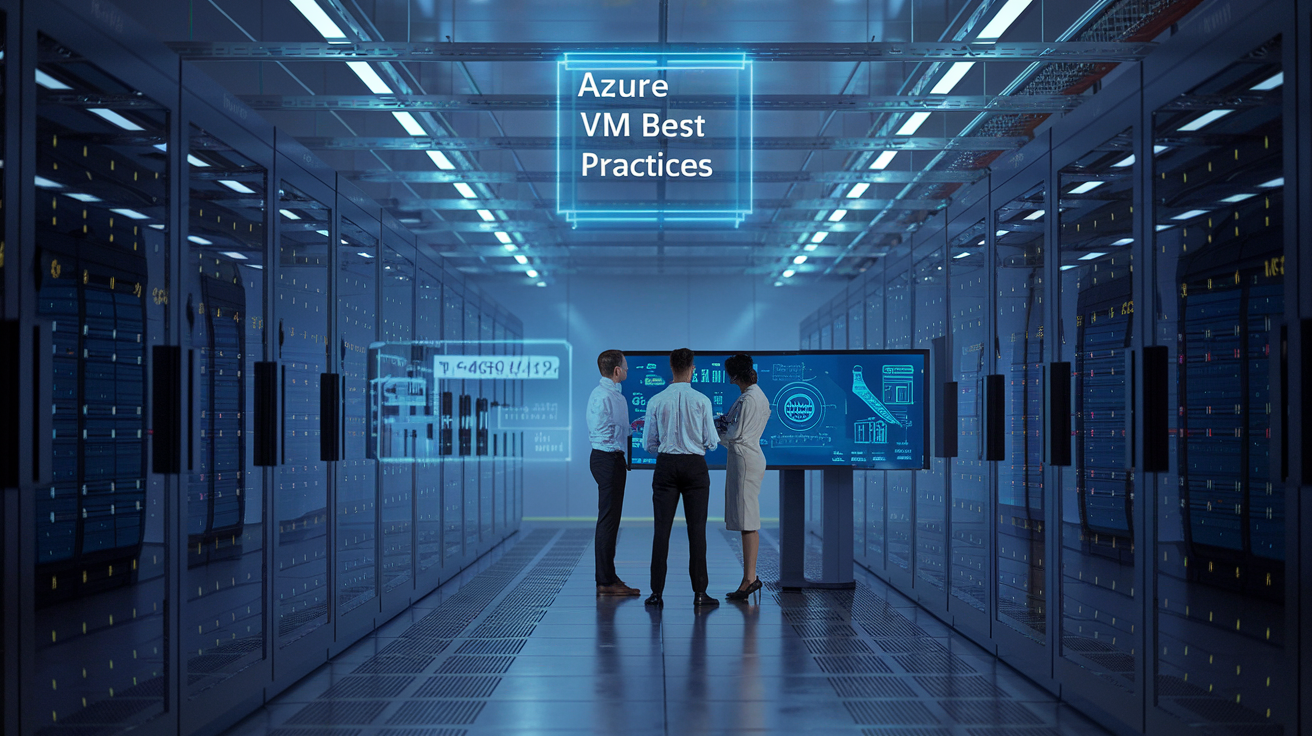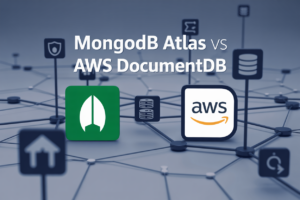You’ve just spent $40,000 on server infrastructure and your CTO is second-guessing every choice. “Shouldn’t we be using containers instead of VMs?” they ask, scrolling through yet another Medium article on their phone.
Sound familiar? The bare metal vs VMs vs containers debate has turned into tech’s favorite holy war, with surprisingly little actual data backing most claims.
I’ve spent 15 years implementing all three approaches across startups and Fortune 500 companies, and I’m about to bust the most persistent myths about infrastructure choices that waste millions in enterprise budgets annually.
By the end of this post, you’ll understand exactly which workloads belong on bare metal servers versus virtual environments – without the marketing hype clouding your judgment.
But first, let’s talk about the performance myth that everyone gets wrong…
Understanding the Fundamentals: What Sets These Technologies Apart
A. Bare Metal: The Raw Power Behind Modern Computing
Picture raw computing muscle – that’s bare metal for you. No middlemen, just your code running directly on physical hardware. Think of it as driving a sports car instead of taking the bus. You get unfiltered performance and complete control, but you’re also the mechanic when things break down.
B. Virtual Machines: The Original Virtualization Revolution
VMs changed the game by creating multiple complete computers inside one physical machine. It’s like having apartment buildings instead of single-family homes – more efficient use of space! Each VM runs its own OS and applications, completely isolated from neighbors. The downside? That hypervisor middleman takes a performance cut.
C. Containers: Lightweight Champions of Microservices
Containers are the minimalists of the computing world. They skip the whole OS duplication thing and share the host’s kernel instead. Imagine packing for a trip with just a backpack versus multiple suitcases. They boot in seconds, use fewer resources, and make deployment stupid simple – perfect for today’s microservices approach.
D. Key Technical Differences That Impact Performance
| Feature | Bare Metal | Virtual Machines | Containers |
|---|---|---|---|
| Boot Time | Minutes | 30+ seconds | Milliseconds |
| Resource Overhead | None | High (10-30%) | Minimal (1-5%) |
| Isolation | N/A | Complete | Process-level |
| Portability | Low | Medium | High |
| Density | 1:1 | 10s per server | 100s or 1000s per server |
Myth Busting: Bare Metal Performance Claims
“Bare Metal is Always Faster” – The Context Matters
The “bare metal is always faster” myth needs serious unpacking. Truth is, modern VMs with paravirtualization and hardware acceleration often match bare metal speeds in real-world workloads. For I/O-intensive applications, the difference shrinks further. Companies frequently discover virtual environments outperform their aging bare metal setups due to newer hardware and optimized configurations.
Hardware Utilization Realities: When Dedicated Resources Become Wasteful
Ever paid for a Ferrari just to drive it to the grocery store? That’s bare metal servers sitting at 15% utilization. Most workloads experience dramatic usage fluctuations throughout the day. Without virtualization, you’re essentially burning money during low-demand periods. VMs and containers let you consolidate workloads and dynamically allocate resources, turning that waste into value.
Modern Bare Metal Solutions: How They’ve Evolved
Today’s bare metal isn’t your grandfather’s server rack. Modern bare metal solutions offer API-driven provisioning, consumption-based billing, and advanced management tools previously exclusive to cloud environments. Providers like Equinix Metal and AWS Outposts deliver “cloud-like” experiences with physical hardware advantages. The lines have blurred, creating hybrid possibilities that challenge the traditional bare-metal-versus-virtual dichotomy.
Virtual Machines: Separating Facts from Fiction
“VMs Create Unacceptable Overhead” – Testing the Truth
That overhead myth? It’s way overblown. Modern hypervisors have slashed that famous “VM tax” to single-digit percentages. I’ve seen enterprise VMs running at 95% of bare metal speed with proper tuning. The real question isn’t if there’s overhead—it’s whether that minimal performance hit matters compared to the flexibility you gain.
Container Controversies Clarified
Container Controversies Clarified
A. “Containers Can’t Handle Enterprise Workloads” – Evidence Says Otherwise
The myth that containers can’t handle serious enterprise workloads has been thoroughly debunked. Companies like Netflix, Spotify, and PayPal now run massive container deployments, processing billions of transactions daily. Modern container platforms have evolved dramatically, offering robust resource allocation, high availability features, and performance that often rivals traditional infrastructure.
B. Security Concerns: Valid Worries vs. Solved Problems
Container security has come a long way. What were once legitimate concerns about isolation and vulnerability management have largely been addressed through:
- Hardened container runtimes
- Automatic vulnerability scanning
- Enhanced kernel security features
- Comprehensive policy enforcement
The real security risks now stem not from containers themselves but from poor implementation practices. Organizations following security best practices often find containers easier to secure than traditional deployments.
C. Orchestration Complexity: Has Kubernetes Changed the Game?
Kubernetes earned its reputation for complexity honestly. Early adopters needed specialized skills and patience to navigate its steep learning curve. But the landscape has transformed dramatically:
| Then | Now |
|---|---|
| Manual cluster setup | Managed Kubernetes services |
| Complex YAML configurations | User-friendly interfaces |
| Limited documentation | Rich ecosystem of tools |
| Specialist knowledge required | Simplified operations |
Today’s Kubernetes offerings from cloud providers and enterprise vendors make container orchestration accessible to organizations of all sizes.
D. Stateful Applications in Containers: No Longer a Myth
Remember when “you can’t run databases in containers” was standard advice? Those days are gone. Technologies like StatefulSets in Kubernetes, persistent volume claims, and storage orchestration have made stateful workloads in containers not just possible but common practice. Major database vendors now provide container-optimized versions of their products, and countless organizations run mission-critical stateful applications in production container environments.
Real-World Decision Making: Choosing the Right Technology
Real-World Decision Making: Choosing the Right Technology
A. Workload Analysis: The First Step to Intelligent Choices
Gone are the days of one-size-fits-all infrastructure. Smart organizations analyze their workloads before jumping to conclusions. CPU-intensive number crunching? Bare metal shines. Microservices with fluctuating demand? Containers are your friend. Need isolation with legacy apps? VMs have your back. The right choice starts with understanding what you’re actually trying to accomplish.
B. Hybrid Approaches: When Mixing Technologies Makes Sense
The secret weapon in modern infrastructure? Mixing and matching. Running containers on VMs gives you isolation plus density. Bare metal for databases with containerized front-ends delivers performance where it counts. Netflix, Uber, and Spotify all leverage hybrid approaches. The most successful architectures combine technologies based on specific requirements rather than dogmatic adherence to a single solution.
C. Cost Considerations Beyond the Hardware
The sticker price? Just the tip of the iceberg. Containers might slash licensing costs but demand retooling and training. VMs reduce hardware spend but incur virtualization licenses. Bare metal eliminates hypervisor overhead but requires physical maintenance. The true TCO includes migration costs, operational overhead, and team expertise—costs that often dwarf initial implementation expenses.
D. Scalability Needs: Planning for Future Growth
Your infrastructure shouldn’t be a straightjacket as you grow. Containers shine with horizontal scaling and cloud elasticity. VMs offer predictable vertical growth. Bare metal provides raw power but with longer provisioning cycles. Smart organizations build with tomorrow’s scale in mind, not just today’s requirements. The costliest decision is often picking a technology that can’t evolve with your business.
E. Migration Paths: How to Evolve Your Infrastructure
Infrastructure evolution beats revolution every time. Moving from bare metal to VMs? P2V tools ease the transition. VMs to containers? Application assessment tools identify good migration candidates. Containerization offers incremental modernization—start with stateless services, then tackle the complex stuff. The best migrations happen gradually, validating assumptions before committing your entire infrastructure to change.
Demystifying Your Infrastructure Choices
The decision between bare metal servers, virtual machines, and containers doesn’t have to be overwhelming once you understand their distinct advantages and limitations. Throughout this discussion, we’ve debunked common misconceptions about each technology’s performance, security, and scalability characteristics. Bare metal isn’t always the performance king in every scenario, VMs aren’t necessarily resource-hungry dinosaurs, and containers aren’t the universal solution for all deployment challenges. Each technology serves specific purposes within modern infrastructure strategies.
Your infrastructure decisions should be guided by your specific workload requirements, business objectives, and operational capabilities rather than industry hype. For performance-critical applications with predictable resource needs, bare metal might be ideal. For strong isolation and legacy application support, VMs often excel. For development agility and efficient resource utilization, containers frequently shine. Remember that hybrid approaches often deliver the best results—combining these technologies strategically can help you create an infrastructure that’s both powerful and flexible enough to evolve with your business needs.




















